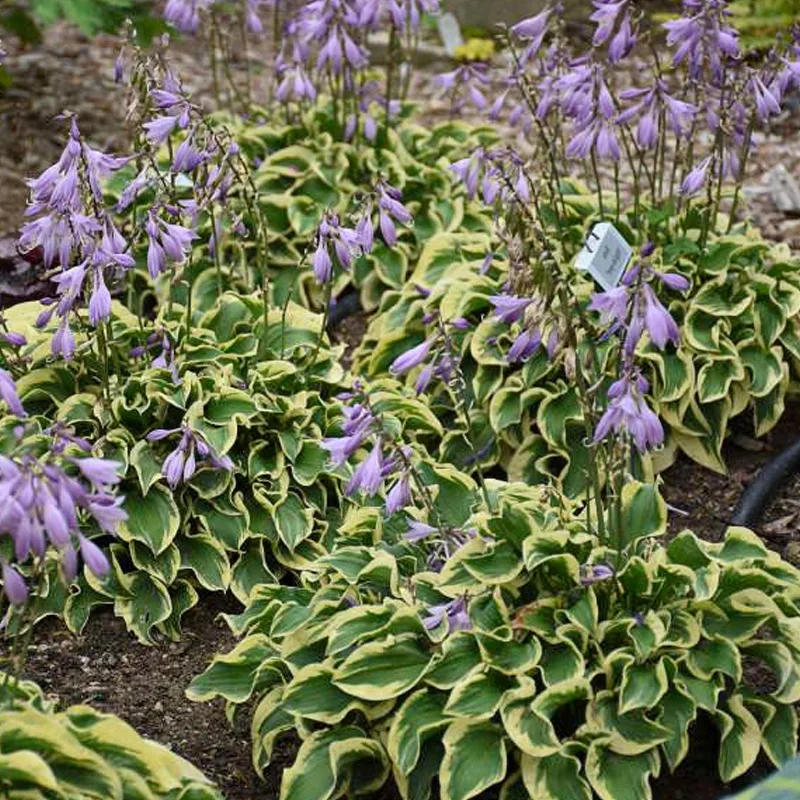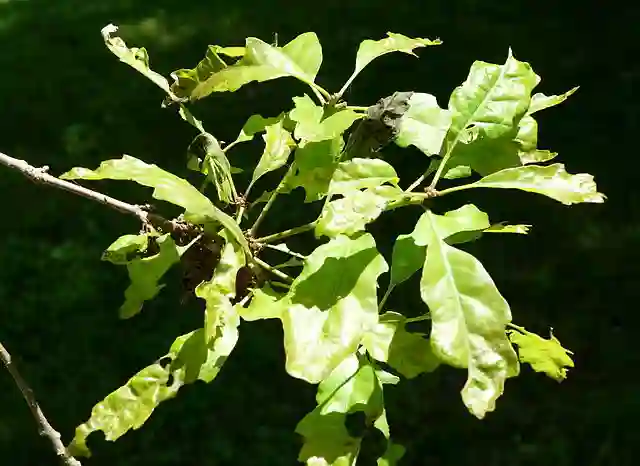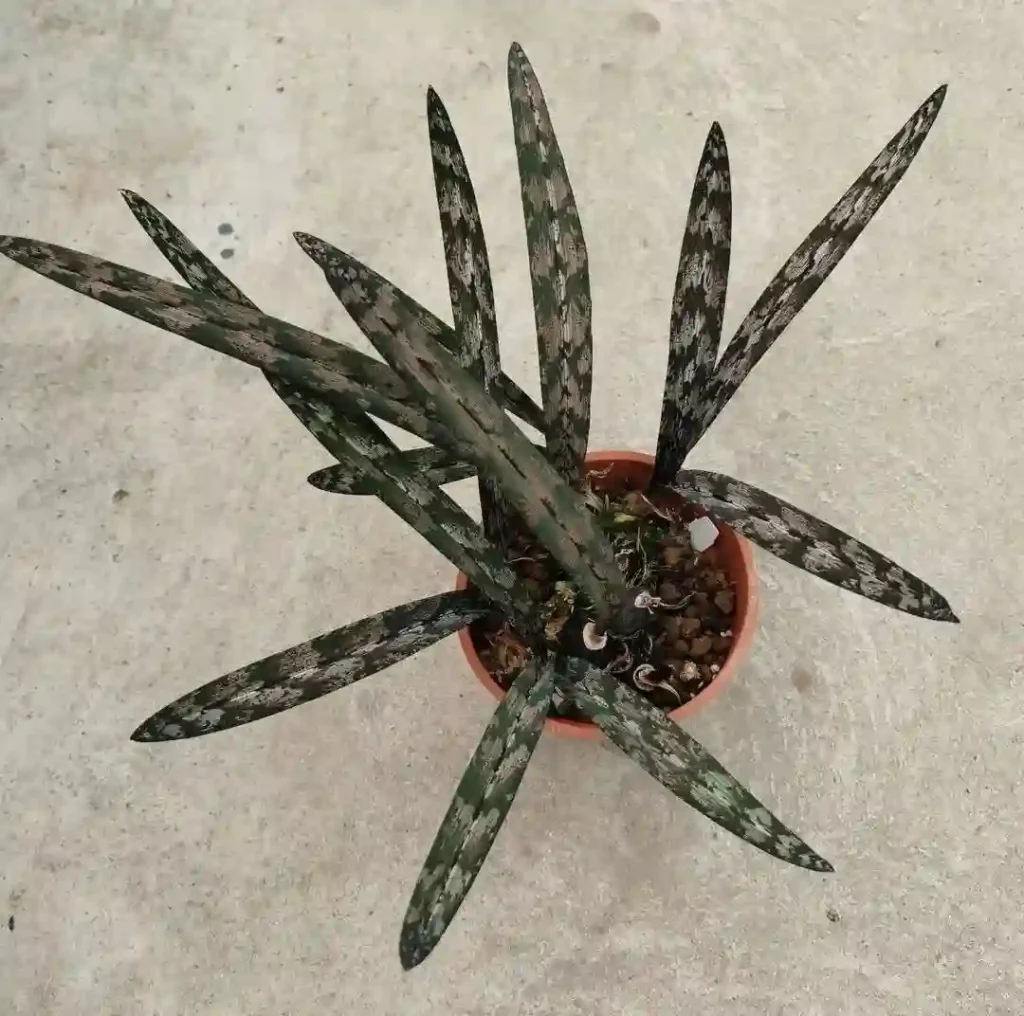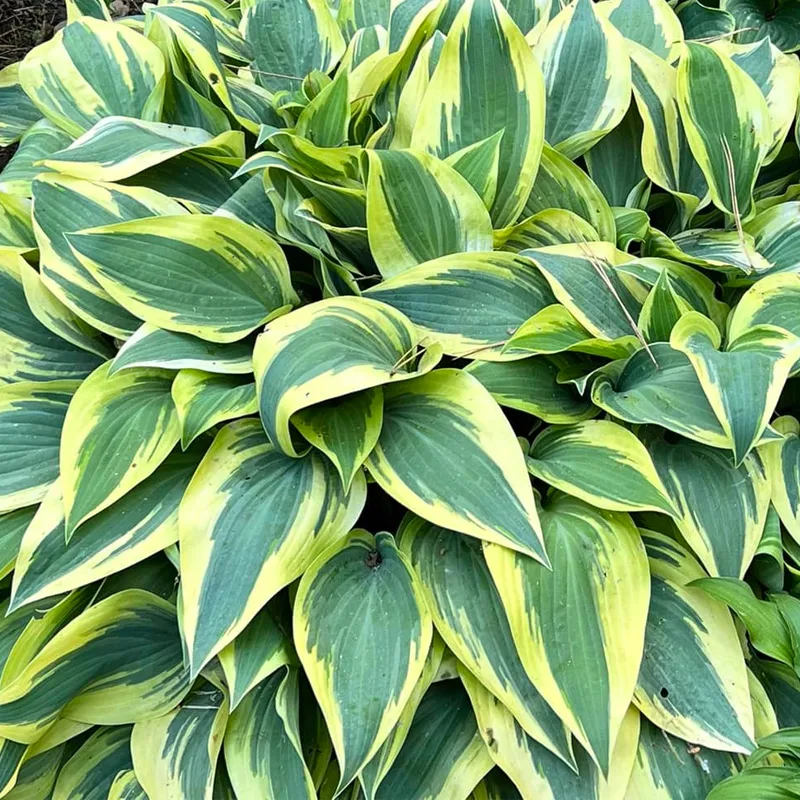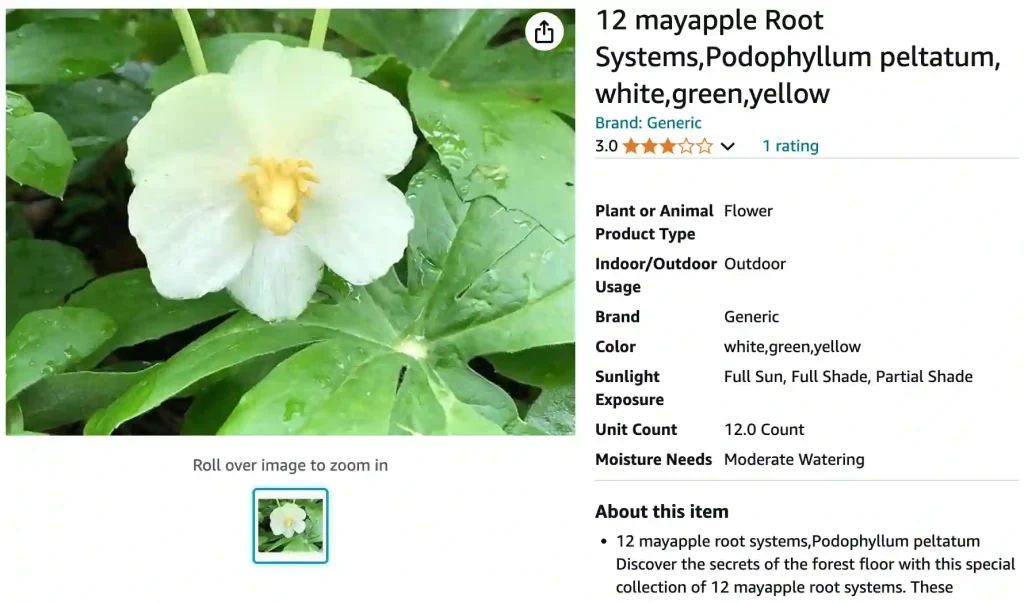
What Is a Mayapple?
Mayapple (Podophyllum Peltatum) is a perennial plant native to North America, found in woodlands and shaded areas. Its unique appearance, with large, umbrella-like leaves and a single white flower that turns into a fruit, makes it quite recognizable. The plant typically grows about one to two feet tall and spreads through underground rhizomes. Mayapple thrives in moist, well-drained soil and prefers shady spots under the canopy of trees.
17 Species in Genus Podophyllum
Are Mayapples Edible?
While the fruit of the Mayapple plant does ripen into a yellowish berry, it is not considered fully edible until it is fully ripe and soft. Even then, caution is necessary. The ripe fruit can be consumed in small quantities and is often used in making jellies, jams, and sometimes in traditional medicine. However, it is crucial to avoid eating the unripe fruit or other parts of the plant, as they contain toxins that can cause gastrointestinal issues.
Do Morels Grow Near Mayapples?
Yes, Morel mushrooms are known to grow in the same habitats as Mayapples. Both plants thrive in similar conditions—rich, moist, shaded forest floors. The presence of Mayapple can often be an indicator that Morels might be nearby. However, finding Morels is not guaranteed just because Mayapples are present. It requires a bit of luck and good foraging skills.
Is Mayapple Poisonous?
Yes, Mayapple is toxic if ingested in large amounts. The plant contains podophyllotoxin, a compound that can cause nausea, vomiting, and other severe symptoms if consumed improperly. The unripe fruit, seeds, and other parts of the plant are particularly toxic. It is essential to handle Mayapple with care and avoid consuming any part of it without proper knowledge and preparation.
What Are Mayapples Used For?
In traditional medicine, Mayapple has been used for various purposes. The root of the plant, after proper processing, has been used in treatments for warts and some other skin conditions due to its cytotoxic properties. However, because of its toxicity, it’s crucial to use it under the guidance of a knowledgeable practitioner. The fruit, once fully ripe, can also be used in culinary applications like jams or jellies, though it should be consumed cautiously.
When Are Mayapples Ripe?
Mayapples typically become ripe in late summer to early fall, around August to September. The fruit changes from green to a yellowish color as it ripens. It is important to wait until the fruit is soft and fully yellow before harvesting it for consumption. Unripe fruit is highly toxic and should be avoided.
How Much Does Mayapple Root Sell For?
Mayapple root, particularly the processed and dried form, can be quite valuable due to its use in traditional medicine. Prices can vary depending on the market and quality but generally range from $20 to $60 per pound. Always ensure you’re purchasing from a reputable source and understand the legal and safety guidelines for its use.
How to Get Rid of Mayapple?
If you need to remove Mayapple from your garden or property, it can be a bit challenging due to its rhizomatic root system. The best approach is to manually dig up the plants, ensuring that you remove as much of the root system as possible. Persistent monitoring and removal of any new shoots are necessary, as the plant can regenerate from remaining rhizomes.
Is Mayapple Poisonous to Touch?
Mayapple is not generally known to cause skin irritation from touching. However, it’s always a good practice to wash your hands thoroughly after handling any part of the plant. Direct contact with the plant’s sap should be avoided, especially if you have sensitive skin.
Mayapple vs Mandrake
Mayapple and Mandrake (Mandragora officinarum) are often confused due to their similar appearances and toxic properties. However, they are distinct plants. Mandrake is known for its hallucinogenic properties and historical use in magical and medicinal practices. In contrast, Mayapple is native to North America and primarily used in traditional medicine. Mandrake has a more pronounced root structure resembling a human figure, while Mayapple has a simpler rhizomatic root system.
Mayapple vs Yellow Root
Yellow Root (Xanthorhiza simplicissima) is another plant sometimes confused with Mayapple. Yellow Root is a native American herb with a yellowish root used in herbal medicine. Unlike Mayapple, Yellow Root is not highly toxic and has different medicinal uses. Mayapple is known for its potent toxins and uses in traditional medicine, whereas Yellow Root is primarily used for its mild astringent properties.
How to Care for Mayapple
Caring for Mayapple involves providing the right environment. Plant it in a shaded area with rich, well-drained soil. Keep the soil consistently moist but not waterlogged. Mulching around the base of the plant can help retain moisture and suppress weeds. Regularly check for pests or diseases, though Mayapple is relatively low-maintenance once established.
How to Propagate Mayapple
Mayapple can be propagated through division or by seeds. To divide, carefully separate the rhizomes in early spring before new growth begins. For seed propagation, collect ripe fruit, extract the seeds, and stratify them by placing them in a moist medium in a cold environment for a few months before sowing.
What to Plant With Mayapple
Mayapple pairs well with other shade-loving plants. Consider planting it with ferns, hostas, or wild ginger. These plants share similar growing conditions and will complement each other in a woodland garden setting.
Understanding Mayapple’s characteristics and uses can help you make informed decisions about planting and handling this unique plant. Whether you’re using it for traditional medicine, foraging for Morels, or simply adding it to your garden, knowledge about its properties and care will ensure you benefit from its unique qualities safely.
If i die, water my plants!
